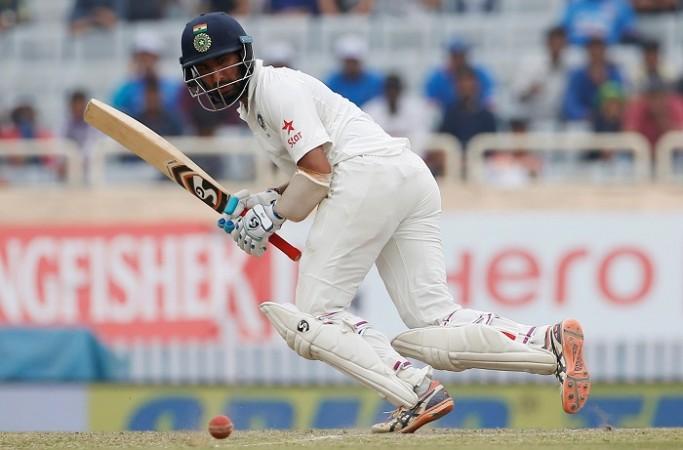
Intent –a word that has been associated quite a bit with the Virat Kohli era of India. Intent to win, to push for runs, to push for wickets, to try and break the game open. It is that intent which has zoomed India all the way up to the No.1 rank in Test cricket.
Watch Day 3 of India vs Australia 4th Test live
While there was a reason why that run-scoring intent was missing in Ranchi – although it could have been marginally quicker – it was difficult to understand, why it stayed in hiding after the first session of day two of the fourth Test match against Australia in Dharamsala.
With the pitch still looking pretty good for batting, India, particularly in the hour before Tea, went into block mode.
Cheteshwar Pujara might have played a masterful innings in Ranchi, but it was only masterful because he ended up scoring a double century. When you bat at a strike rate of below 40, you need to make sure you make a big score or it needs to be according to the situation of the game – both were the case in that Ranchi Test match.
But for Pujara to bat at 37.74 on day two of a wicket that really had no demons in it and wasn't too difficult to score runs off, is a little difficult to fathom. It is unfair to criticise someone like Pujara, who was deservedly given the man of the match honour in the third Test, but you do question the right-hander's intent, or the lack of it, sometimes.
The problem with also going into the block zone, like Pujara did on Sunday, is that the batsman at the other end – in this case Ajinkya Rahane – either feels the pressure to score, or also decides that is the way to go.
Australia's bowling in the first session was fantastic, but India really missed a trick in the second session, by not taking advantage of the match situation. And this is where Pujara needs to show a little more understanding of the game, show his versatility, take the lead and try and put the opponent on the back foot, not just by the one grind-it-out method.
He is more than capable of doing that, but with Pujara, once he goes into his shell, he finds it really difficult to get out, and that was the case on Sunday. After he was dismissed for 57 (151b, 6x4), the pressure to score runs fell on Rahane, with that pressure only increasing when Karun Nair failed with the bat again.
With India playing a batsman short, the intent was going to be key here – to get runs quickly when the wicket was at its best.
Now, with India six down, thanks to Nathan Lyon's four-for, the pressure has only increased. Maybe Wriddhiman Saha, Ravindra Jadeja and the rest of the lower order will thrive under the pressure. But they shouldn't have been facing that much pressure in the first place.
Even if India were six down at the close of play on day two, intent to score runs would have meant they were probably level with Australia or maybe a few runs short. Instead, there are still 52 runs to make-up for a team that will be batting last on this wicket.
This is where Virat Kohli would have really come to the fore. The skipper, who was due a big knock, would most definitely have shown that intent, and maybe India would have been in a position of strength as a result, rather than having to put up another fighting innings.
Intent is going to be key over the next three days. India showed intent with the ball, they need to do it with the bat as well in Dharamsala.

















